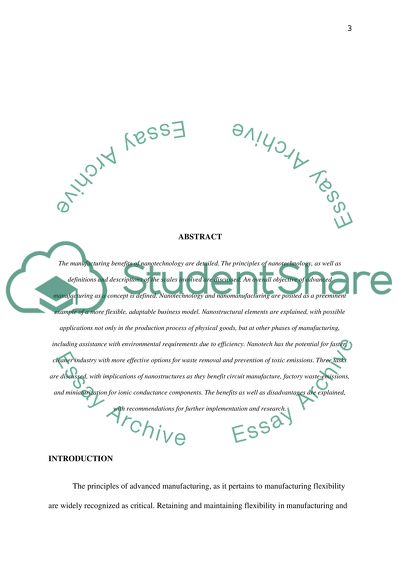Cite this document
(“Advanced manufacturing techniques and the advent of nanotechnology Assignment”, n.d.)
Retrieved from https://studentshare.org/engineering-and-construction/1394498-advanced-manufacturing-techniques-and-the-advent-of-nanotechnology
Retrieved from https://studentshare.org/engineering-and-construction/1394498-advanced-manufacturing-techniques-and-the-advent-of-nanotechnology
(Advanced Manufacturing Techniques and the Advent of Nanotechnology Assignment)
https://studentshare.org/engineering-and-construction/1394498-advanced-manufacturing-techniques-and-the-advent-of-nanotechnology.
https://studentshare.org/engineering-and-construction/1394498-advanced-manufacturing-techniques-and-the-advent-of-nanotechnology.
“Advanced Manufacturing Techniques and the Advent of Nanotechnology Assignment”, n.d. https://studentshare.org/engineering-and-construction/1394498-advanced-manufacturing-techniques-and-the-advent-of-nanotechnology.


